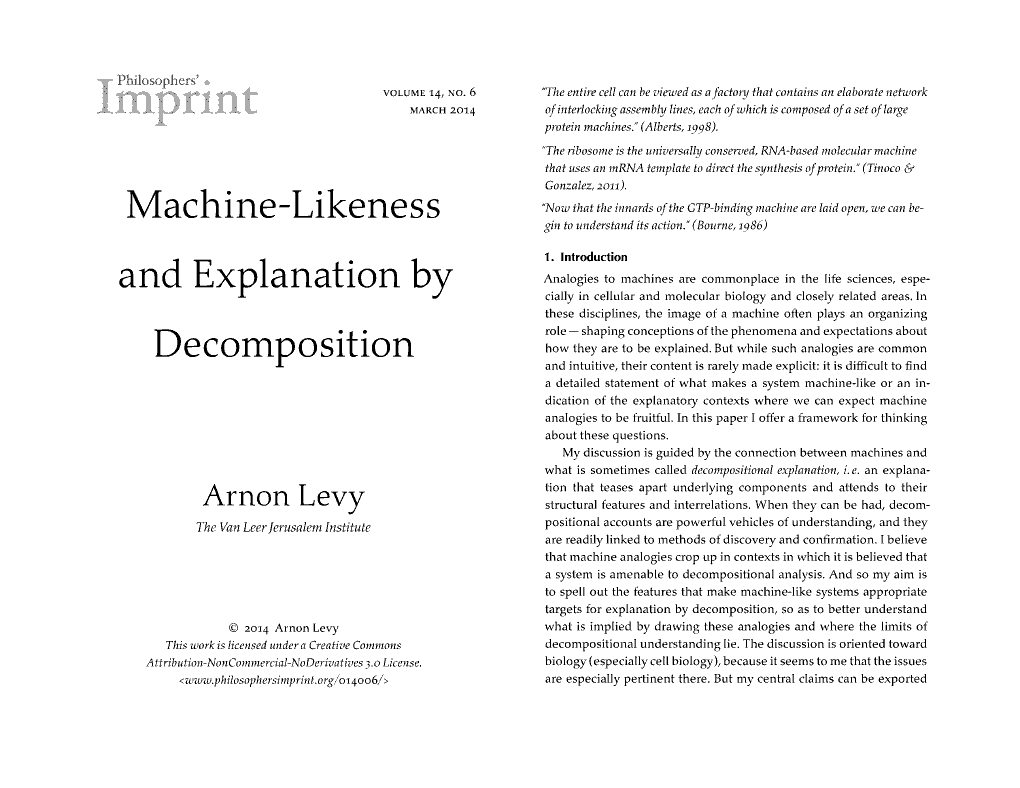Machine-Likeness and Explanation by Decomposition
Skip other details (including permanent urls, DOI, citation information): This work is licensed under a Creative Commons Attribution-NonCommercial-NoDerivatives 3.0 License. Please contact [email protected] to use this work in a way not covered by the license.
For more information, read Michigan Publishing's access and usage policy.
Abstract
Analogies to machines are commonplace in the life sciences, especially in cellular and molecular biology — they shape conceptions of phenomena and expectations about how they are to be explained. This paper offers a framework for thinking about such analogies. The guiding idea is that machine-like systems are especially amenable to decompositional explanation, i.e., to analyses that tease apart underlying components and attend to their structural features and interrelations. I argue that for decomposition to succeed a system must exhibit causal orderliness, which I explicate in terms of differentiation among parts and the significance of local relations. I also discuss what makes a model depict its target as machine-like, suggesting that a key issue is the degree of detail with respect to the target’s parts and their interrelations.



